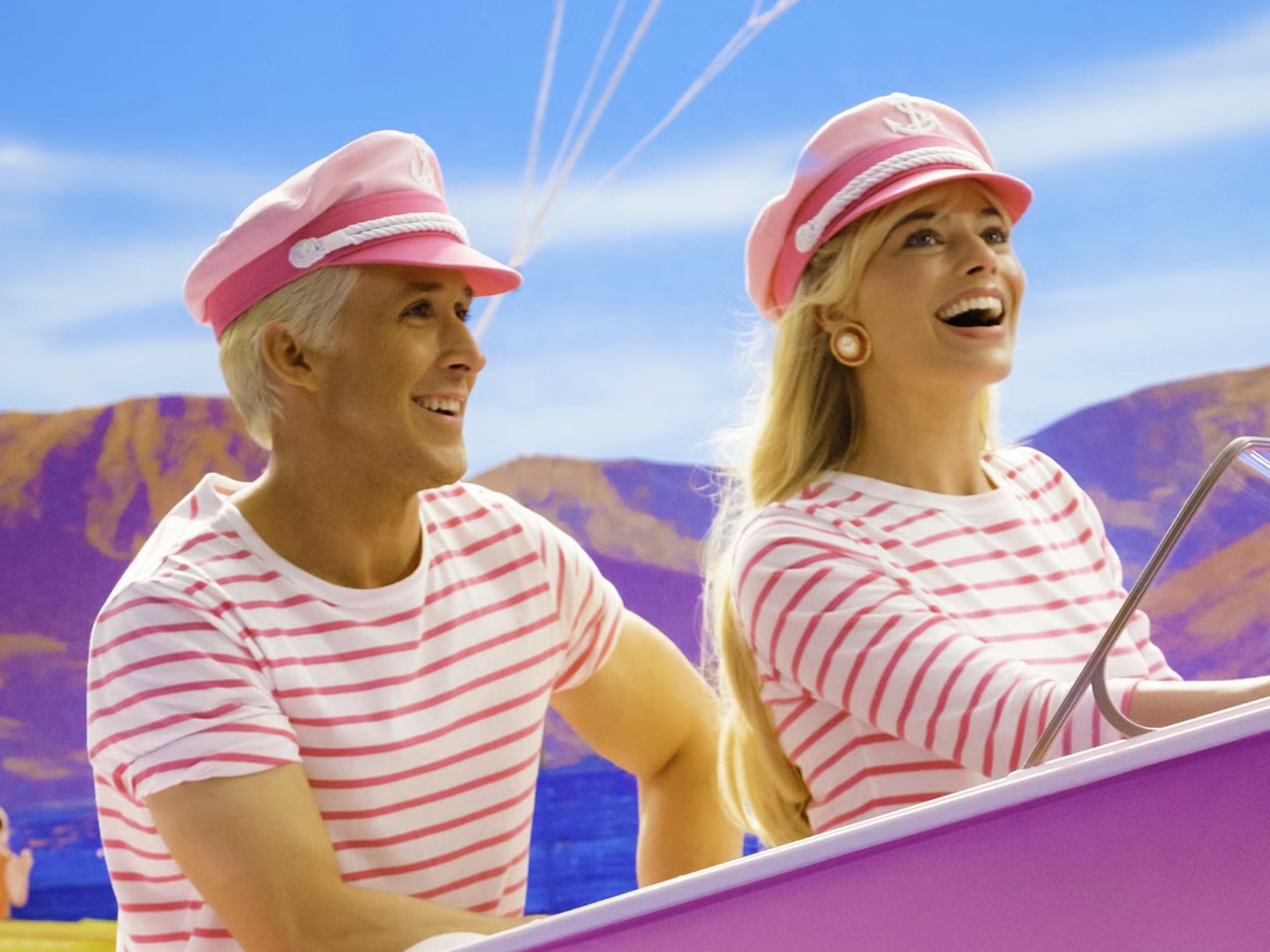How Barbie made me rethink my views on pink
Can I still be a goth if I like pink? Did Sylvia Plath wear pink? I think I’m having a pinkestential crisis, writes Victoria Richards


I have a confession (whisper it): I have a newfound love of pink. It’s so “off brand” for me – I am a self-identifying “sad girl”, most often seen in black – that I can barely bring myself to say it, let alone admit that the Barbie movie might just have been my personal cultural highlight of 2023. And in my “Victorian ghost” opinion, its snubbing at last night’s Golden Globes was a travesty.
I have to ask myself: how did it come to this?
Pink, after all, doesn’t really come with the territory when you’re wafting around graveyards, reading Sylvia Plath and writing poems with a distinct splash of melancholy; yet, here we are: I booked tickets waaaay in advance to see Margot Robbie and Ryan Gosling’s frothy spectacle – I even took three 11-year-old girls with me, for the full high-octane, high-volume experience. I bought us matching T-shirts (black, with a hot-pink Barbie inscription, in sequins) and we had a sleepover, afterwards. We even did makeovers.
The thread pulling this all together? Neon pink. It’s inescapable. Just look how Margot Robbie dazzled.
There’s just something about pink I can’t help but feel suddenly drawn to, for which I can only blame Greta Gerwig: it’s so bold and so brash that (to me) it feels strangely... subversive. It is an instant shot of dopamine, the sartorial equivalent of those vitamin D “energy shots” with turmeric and ginger; it is a mood-boosting dip in the sea when it’s slightly too cold and your skin is left fizzing with salt and shock at the same time; it is a slap-in-the-face dash of joy, a sudden streak of colour on a dull, grey afternoon. It is silky, saccharine silliness – the pink froth of ballet tutus and a loud, proud kiss. It is cheeky, naughty and fun.
Yet for years I’ve actively campaigned against pink: I’ve hung up my Barbies in favour of a ban on gender stereotyping and appeared on radio and TV and in these news pages advocating against the “pinkification” of little girls.
I’ve even been on Radio 4 to talk about how I believe Peppa Pig is a terrible and sexist role model for children, because of the way she (Peppa) handles pink: such as the time Daddy Pig’s football shirt gets accidentally dyed in the wash. In one incendiary episode, Daddy Pig assumes his shirt “must be one of Mummy’s dresses” and says pink “isn’t a good colour for a football shirt” (wrong: everyone from Barcelona to Gillingham has played in pink). Daddy Pig also asks George what he thinks of pink – to which the mostly non-verbal George replies: “Yuk”. This exact issue caused a stir over on Mumsnet, and I can understand why.
The reason pink can be so problematic is because it is impressed upon little girls before they’re old enough to understand its implications. And there are implications – real ones. It begins before they’re even born, and goes like this: little girls are “sugar” and “spice” and “nice” and “pretty” and “cute” and have to strive to be “ladylike” or later (shudder) “sexy”. Whereas blue is “for boys” because they’re “brave” and into “science” and are “leaders”, you see. Apparently.
People who believe it’s harmless, that it’s cute for newborn baby girls to wear pointless bows attached to their one cotton wool wisp of hair, should think again: for extensive research shows that marking kids out by gender actually reinforces stereotypes about what girls and boys can (or can’t) do – and has been shown to have long-lasting and damaging effects.
The Fawcett Society was so worried about the ways in which gender stereotyping can harm children that it ordered a commission to gather evidence and attempt to find solutions to the problem, after its own study found that stereotyping in childhood has wide-ranging and significant negative consequences for both women and men, with more than half (51 per cent) of people affected saying it constrained their career choices and 44 per cent saying it harmed their personal relationships.
Parents with new babies and young children, the review said, inadvertently reinforce gender stereotypes, creating a “gendered world” through toys, play, language and environment. Teachers reward boys’ and girls’ behaviour differently – and representations in children’s stories are often stereotyped. By age two, children are aware of gender and as early as six years old, children associate “intelligence” with being male, and “niceness” with being female.
When you take those long-reaching risks into consideration, that “harmless” pink fluffy bow starts to look less cute, and more... sinister. Doesn’t it?
Yet the ubiquitousness of pink (for girls) v blue (for boys) on the shelves at supermarkets and department stores is a relatively new phenomenon – interestingly, it wasn’t always the case. In Victorian England, baby girls were dressed in blue because it was seen as more delicate and feminine, while baby boys were given pink clothes to wear. The magazine Earnshaw’s Infants’ Department noted in 1918: “The generally accepted rule is pink for the boys, and blue for the girls.”
Why? Well, some believe it was because blue was associated with the Virgin Mary, hence seen to be more feminine, while pink was closer to “regal” red. Yet after the Second World War or thereabouts, the script changed and fashion retailers and advertisers started marketing blue to men and pink to women – and it took off. I mean, really took off. Look around an office (or newsroom) now and you’ll be hard-pressed to pick out anything other than a sea of white and blue. Brave is the man who wears corporate pink.
But here’s where I struggle with a sort of cognitive dissonance – the hype around Barbie has given me a burning desire for all things rosé. So, does liking pink make me a bad feminist? Did I do wrong by my daughter and her friends by taking them to see Barbie in the first place?
When my daughter was born, I was so paranoid about pink that I imposed an outright ban on gendered gifts – no Polly Pockets for her, no pink satin bows and bonnets and itsy bitsy booties. No, she wore punk-rock black baby grows with the insignia of rock and metal bands. I eschewed pink plastic in favour of tractors and cars. I once made such a fuss at nursery because a carer had handed out toothbrushes – pink to the girls, blue to the boys – that I called a Serious Meeting with the manager.
I’ve waged a lifetime war on exactly this colour, yet along came Barbie – propelling mainstream soft crimson into subversive, hot punk pink – and I adore it. Sigh. Am I having a pinkestential crisis?





